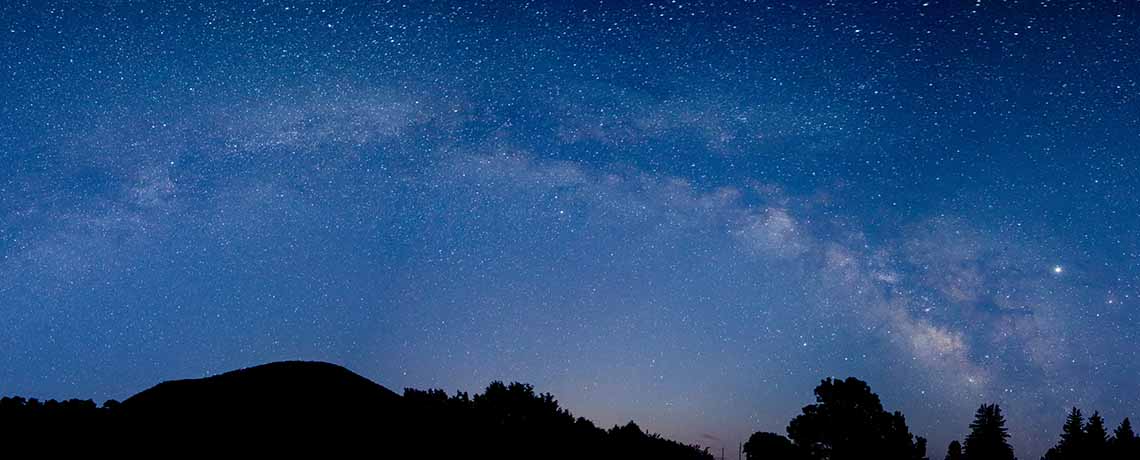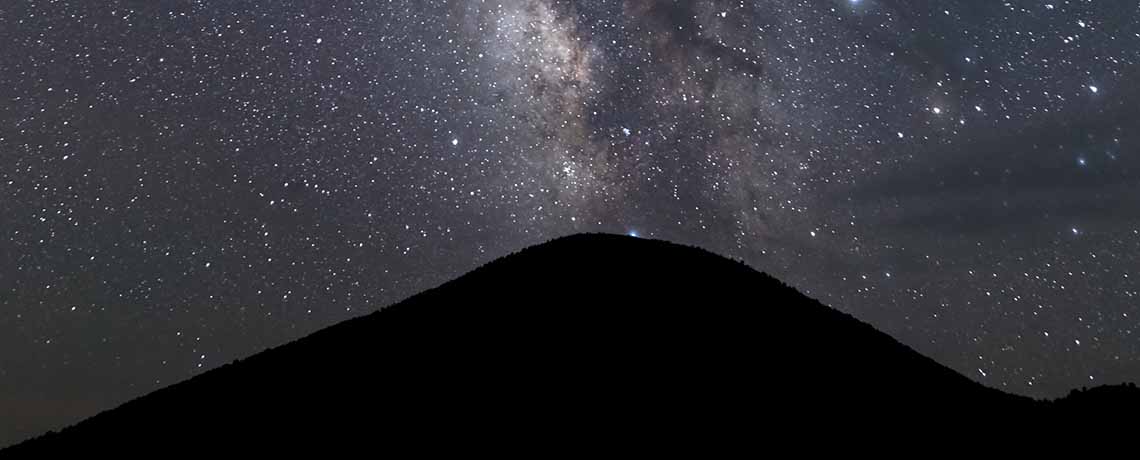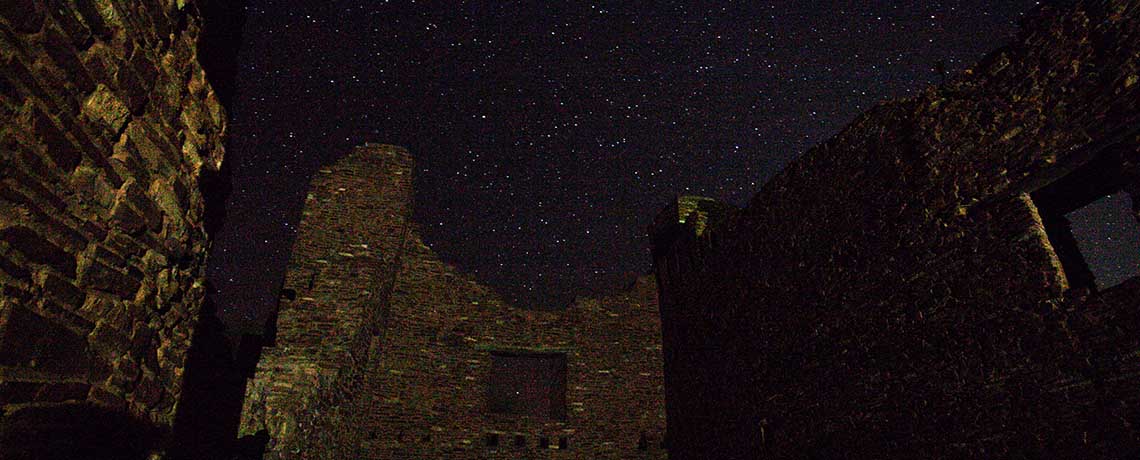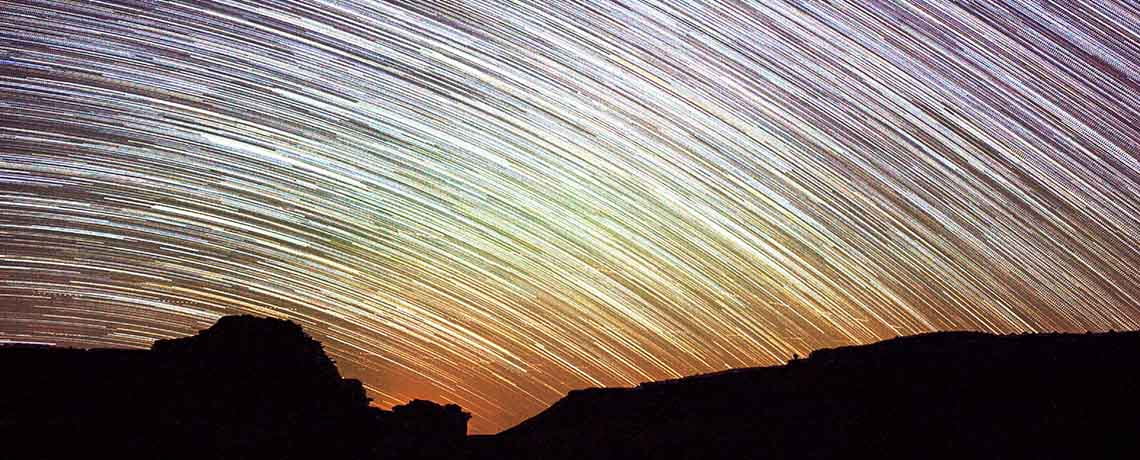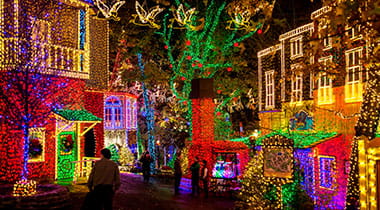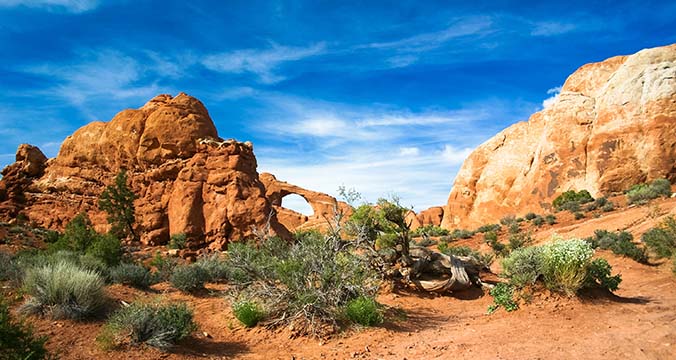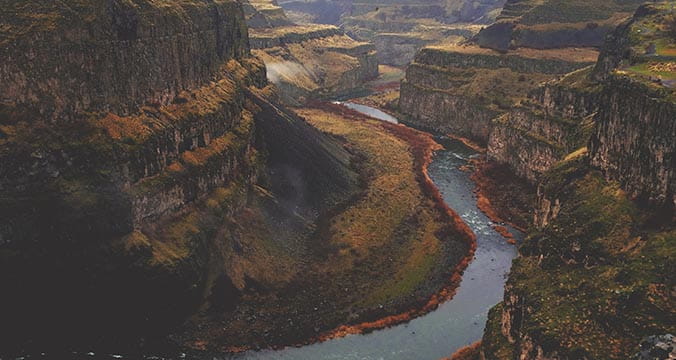Even at twilight at New Mexico’s Capulin Volcano National Monument, people say they’ve never seen so many stars. Two hours later at full darkness, they are floored by the celestial scenery, says Geoff Goins, chief of interpretation at this certified International Dark Sky Park.
“One elderly woman came up to me at twilight and asked if the long cloud was going to interfere with the stargazing,” says Goins. “I had to explain that the cloud was actually the Milky Way. She was astounded; she had never seen it before.”
She’s not alone. Some 80 percent of Americans can no longer see the Milky Way Galaxy from their homes, according to the 2016 New World Atlas of Artificial Night Sky Brightness. That’s a significant loss considering electric street lighting started less than 150 years ago. Now urban light pollution can obscure so much of the night sky that only the moon and a few bright planets may be visible in some cities.
To protect this disappearing natural resource, the International Dark Sky Association, a global accreditation and advocacy group, has certified 80 International Dark Sky Places in the U.S. and more than 130 around the world since 2001. The association qualifies dark sky sites using light measurement and monitoring, plus strict guidelines on area lighting. Different criteria determine classification as a dark sky reserve, park, sanctuary or community.
DARKNESS ON THE NEW MEXICO TRUE DARK SKIES TRAIL
The night sky is extremely dark at Capulin Volcano due to the sparse population, high altitude and dry air, says Goins. “It’s so dark that we have trouble recognizing constellations because the sky is so crowded with bright stars.”
Similar dark sky conditions exist in many locations in the state, leading to the 2018 establishment of the New Mexico True Dark Skies Trail. It includes four additional certified International Dark Sky Places: Chaco Culture National Historical Park, Salinas Pueblo Missions National Monument, Clayton Lake State Park and Cosmic Campground. Programs, star parties and astronomy festivals invite the public to learn more at these destinations.
INTERGALACTIC SPECTACLES
At Capulin Volcano, an 8,182-foot-tall cinder cone, twice-a-month interpretive programs start with a lecture on the night sky and how stars helped native peoples navigate and establish what became known as the Sante Fe Trail, which runs nearby. Then participants head out to the telescopes that are focused on planets, galaxies, star clusters and nebulae, explains Goins.
What has the biggest wow factor? “The rings of Saturn is number one. People just can’t get over seeing that with their own eyes,” says Goins. “Second is other galaxies, like the Whirlpool Galaxy with spiral arms.”
With further inspection, stargazers can see a dark line in Saturn’s rings, a gap caused by a moon, explains Goins. You can count five moons, notably orange-colored Titan. On Jupiter, not only are four moons visible, but so is the weather; cloud bands make the planet look striped. “The details are revealed in all their magnificence,” he says.
LINKING STARGAZING TO THE ANCIENT WORLD
At Chaco Culture National Historical Park, a UNESCO World Heritage Site, visitors are also awestruck by Saturn and other astral objects revealed in the observatory and through more than 60 educational programs a year. They are further fascinated by the legacy of ancient astronomy and the celestial alignments featured in the archaeological ruins, says Nathan Hatfield, chief of interpretation. “A dark night sky connects us to those early indigenous people,” he adds.
“Celestial observation has been conducted here for thousands of years to mark times for planting, harvesting, hunting certain animals and performing rituals,” explains Hatfield. “Ancient Chacoans captured the annual movements of sun and moon in the design of walls, doors and windows, using architecture to create a calendar.”
At Chaco’s Casa Rinconada, the great kiva—a room used by Puebloans for political meetings and spiritual ceremonies—was built with near-perfect geometry aligning with the four cardinal directions. A beam of sunlight at dawn on the summer solstice shines through a window to illuminate an interior niche for offerings, explains Hatfield.
Another astronomical tool, the Sun Dagger, features a spiral petroglyph with a rock slab arrangement that reveals a light dagger through the heart of the spiral at sunrise on the summer solstice and daggers of light on each side of the spiral on the winter solstice, he continues.
A starburst pictograph is believed to depict the supernova in 1054, and a petroglyph possibly portrays the full solar eclipse of 1097.
“The Chacoans at the time were paying close attention to what was happening in the night sky,” says Hatfield.
STELLAR TIMES
Additional International Dark Sky Places on the dedicated New Mexico trail offer a variety of visitor experiences. Cosmic Campground in Gila National Forest is an International Dark Sky Sanctuary, the first in the U.S. and one of 11 in the world designated for its remote location. It has basic facilities for stargazing campers.
At Clayton Lake State Park, you can spend the day investigating the fossilized tracks and tail drags from eight kinds of dinosaurs before the skies darken for viewing. The Star Point Observatory here enables deep-space exploration and hosts star parties.
Salinas Pueblo Missions National Monument protects three of America’s best-preserved 17th-century Spanish missions as well as the excavated ruins of the Gran Quivira Pueblo. They are interesting to tour before the stars appear over the ruins.
“The universe is always present everywhere, of course, but at a dark sky place, it’s visible. You get more of a sense of scale,” says GB Cornucopia, a 30-year interpretive guide in Chaco Canyon.
Hatfield echoes that sentiment, observing that a dark-sky viewing experience is “mind-blowing and humbling.” He adds, “It makes us realize we are part of a larger cosmos.”
FINDING YOUR WAY IN THE DARK
New Mexico doesn’t have a monopoly on International Dark Sky Places. Check out these four spots that are well worth the drive.
CHERRY SPRINGS STATE PARK, PENNSYLVANIA
This park’s remote location just outside Coudersport in north-central Pennsylvania makes it one of the best places in the Eastern U.S. for stargazing. It sits atop a 2,300-foot-high mountain in Susquehannock State Forest, providing views of the nucleus of the Milky Way Galaxy on clear nights. Popular among amateur astronomers, the park impresses with a 360-degree sky view, four small observatories to rent and public programs.
GEAUGA OBSERVATORY PARK, OHIO
Based in Montville in northern Ohio, this 1,100-acre park features the recently refurbished Nassau Astronomical Station with a 36-inch telescope, a planetarium, five outdoor telescope pads and astronomy-themed exhibits. Walk the Planetary Trail, which is just under a mile, with a scale model of the solar system.
BEVERLY SHORES, INDIANA
When this International Dark Sky Community earned certification in 2014, it was only the seventh in the world. Bordered by Lake Michigan to the north and Indiana Dunes National Lakeshore to the east, west and south, the small town is committed to controlling outdoor lighting to reduce light pollution, retrofitting fixtures and educating property owners to do the same.
STAUNTON RIVER STATE PARK, VIRGINIA
This 2,400-acre park in Scottsburg, which sits near the North Carolina border, hosts monthly guided observation sessions spring through fall, special programs for meteor showers and supermoons, and an astronomical field for telescopes.








